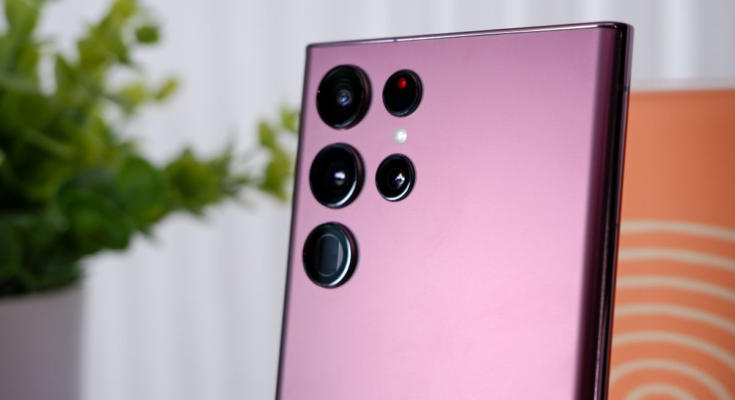One of the first things I tend to do when using a new Samsung Galaxy flagship phone is to switch off the extra image processing applied by default to the camera, notably the Scene Optimizer mode introduced in recent Galaxy models.
The reason for this is the image processing done by the cameras is usually enough, with the extra enhancements trending to overcook a photo with too much processing or color saturation leading to unnatural shots. And the same broadly applies to Android phones with such features located in the camera settings.
But I’ve changed my mind with the Samsung Galaxy S22 Ultra, and by extension the rest of the Galaxy S22 range. That’s because Samsung really seems to have worked on the smart processing of the Scene Optimizer mode so that it enhances photos in a believable and pleasing way rather than crank up saturation and smoothing.
Samsung has already done a lot to improve the cameras on the Galaxy range, with the S22 phones improving upon the rather excellent Galaxy S21 handsets, which very noticeably improved upon the Galaxy S10 phones. No longer do Galaxy phones produce photos with unnatural candy-like colors, and dynamic range is now very impressive. Those improvements seem to have carried over to the Scene Optimizer mode, which I put to the test using a Galaxy S22 Ultra.
To begin with, take a look at the photo of the flower bed below. It was taken on a bright day with a selection of flowers bathed in the type of sunlight that’s rare for London. This presented a challenging shot for even the best camera phones to capture.
We can see this with the standard shot the Galaxy S22 Ultra captured, with plenty of light sucked in, but also slightly washing out the punchy red and yellow hues of the flowers.
But switching on the Scene Optimizer for the same shot and we can see the brightness is dialed back and the white balance is tweaked to give the flowers more pop. I feel dynamic range is improved here as well, notable in the wooden flooring of the floating garden that I reckon has more texture to it. Granted, this isn’t as true to life as the standard shot, but I’d argue that that the photo without Optimizer turned on errs into the realm of overexposure and presents a less pleasing overall look.
This can be seen again in the photo of some gorse below taken on a blustery grey where the sky quickly moved from clear to stuffed with angry slate-gray clouds.
The standard photo is very nice with the 108MP main camera on the Galaxy S22 Ultra picking old a lot of detail, while neatly balancing the colors of the gorse in contrast to the blue-gray sky.
Flip on the Scene Optimizer and the shot gets a little moodier, with the sky taking on a darker, more dramatic hue. Yet at the same time the yellow of the gorse flowers wasn’t compromised, and the red top to the marker pole still popped.
It’s subjective of course, but I rather like the result the Scene Optimizer managed to do here. I feel it tends to produce shots that thread a line between the contrast-y photos of the Google Pixel 6 Pro and the natural colors tones an iPhone 13 Pro can deliver; these both happen to be my favorite phone when it comes to photography.
When things get darker, the Scene Optimizer comes into its own. In a good few cases, it’ll simply switch on the Galaxy S22 Ultra’s night mode. As you can see in the first photo of my friend Claire, with the Screen Optimizer off the standard shot is a blurred mess, with the camera struggling with the overall low light of a bar that was punctuated by candles and distant light sources at the same time.
Using the Scene Optimizer, night mode was activated and the resultant shot was much improved, with better processing and edge detection, along with crisper detail on both Claire and the background.
To give the standard mode another chance (the previous lackluster photo may have been an unfortunate fluke), I took a second photo of Claire with night mode triggering this time. The result was a perfectly decent photo given the lighting of the bar. But it felt a bit flat with the color tone of Claire’s face looking a little off.
With Scene Optimizer on, to my eye the shot has a more pleasing color tone and more contrast. It’s not the best low-light photo I’ve seen, but it’s nice to see that the smart image processing is actually working to make an improved photo rather than one that just ramps up brightness or color saturation.
So in conclusion, for once I can say you don’t have to go and turn off Scene Optimizer, especially as it can sometimes help cover any clumsy bouts of user error.
And combined with the overall improvement Samsung has made to the cameras and computational photography of the Galaxy S22 range, I feel the Galaxy S22 Ultra has pretty much caught up with the iPhone 13 Pro and iPhone 13 Pro Max in delivering impressive simple point-and-shoot photography. It also sets the standard for other optional processing modes on Android phones to reach for.
I’m now intrigued to see where Samsung takes its camera tech and smarts next; roll on 2023 and the Galaxy S23.



